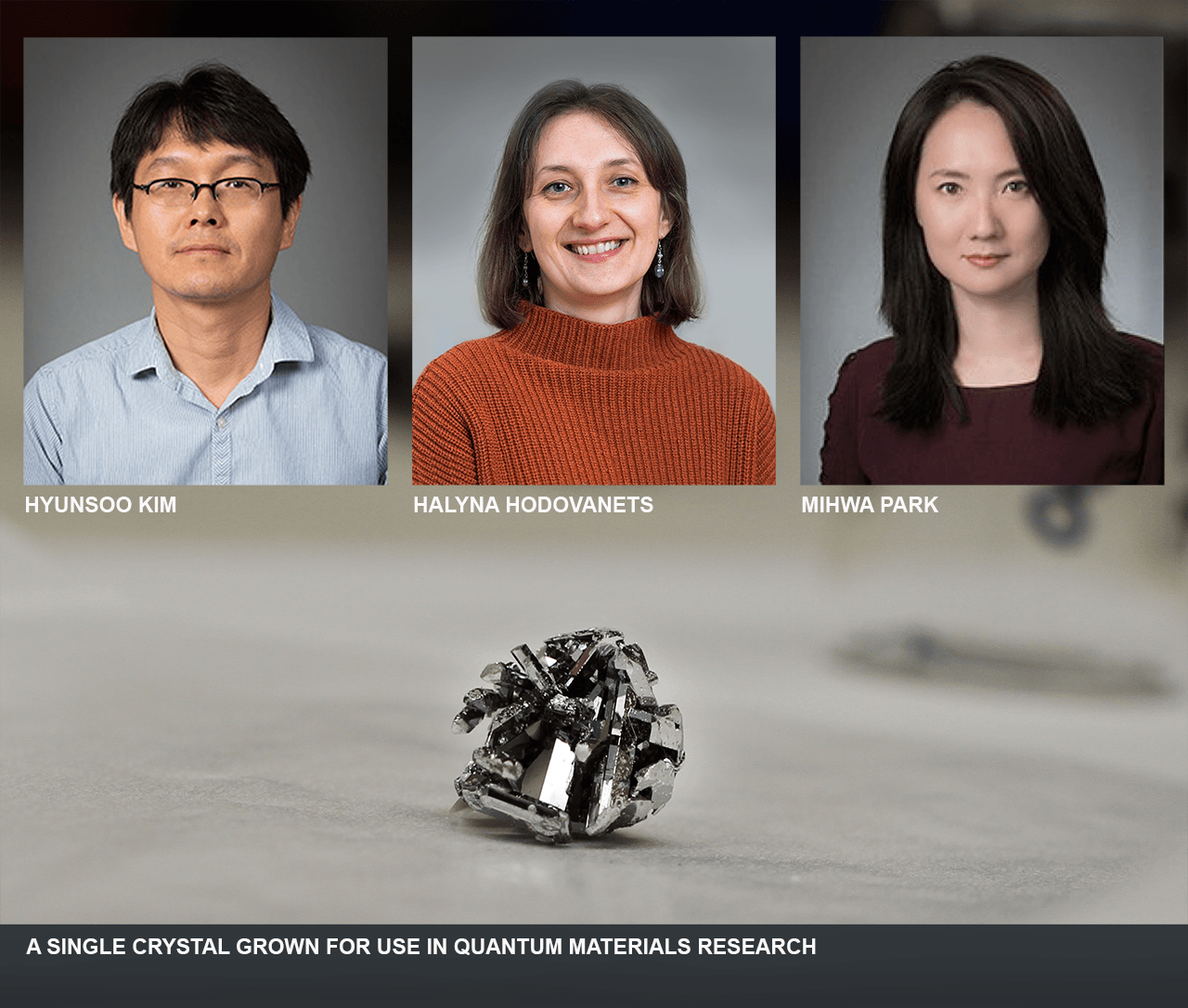Grant Funds At Work
For Tomorrow's Quantum Physicists, Identity Will Be Crystal Clear

TTU's New Summer Program to Help High School Students Identify as Scientists
9.13.2021 | By Toni Salama
Three Texas Tech University researchers will soon be guiding a select group of high school students to begin thinking of themselves as scientists. It's a new STEM project funded by a grant from Lubbock-based Helen Jones Foundation and led by TTU professors.
The project, “Promoting Science Identities of High School Students in Quantum Materials Science,” will teach participants to research and grow high-quality single crystals. The crystals will be grown from compounds that are safe to handle and chosen for their potential use in quantum information technologies.
In fact, the project will take the form of a fun, friendly competition—and their crystals will be destined for an interactive exhibit at the Museum of Texas Tech University.
Along the way, the high-schoolers will learn how to work safely in a professional laboratory environment and how to communicate their research findings just as professional scientists do—through oral and poster presentations.
Applications will open in spring 2022 to high school students in the Lubbock, Cooper and Frenship Independent School Districts. From among the applicants, 20 students will be selected to participate in a summer lab on the Texas Tech campus. Students will conduct lab work over a total of five days, but those days will be spread out to allow sufficient time for growing the crystals.
The students' achievements will be open to the public when their crystals become a museum exhibit in the fall.
The project is the brainchild of Texas Tech physicists Hyunsoo Kim and Halyna Hodovanets, both professors in the Department of Physics & Astronomy in the College of Arts & Sciences. Even before they both joined TTU in 2020, they had discussed the concept of such a program with one another, Kim said.
“We were both interviewed for tenure-track faculty positions in December 2019,” Kim related. “I came first, and as I was leaving Lubbock, looking down from the airplane, I quickly realized that science outreach programs might be limited in the South Plains region.”
He immediately discussed the idea with Hodovanets, and they both liked the possibilities of holding a contest of single crystal growth.
Kim and Hodovanets chose crystal growing for the project because they both are trained in that field. Hodovanets, in particular, has been using this technique as her major research tool and has trained many students, Kim said.
“Based on our experience, we realized that high school students can grow single crystals under our supervision,” Kim said. “The single crystals are very beautiful and therefore the outcome would amplify their scientific achievements.”
Now that the project will become reality, Kim will supervise the scientific aspects of the event and Hodovanets will manage its logistical aspects. Mihwa Park, an assistant professor of STEM education in the Department of Curriculum and Instruction in Texas Tech's College of Education, is on board to strengthen the project's educational components.
It was Park who brought the concept full circle with the idea for the museum exhibit.
“I thought that if the students can present their final outcomes and display their crystals at the museum,” Park said, “it will be an excellent chance for them to be recognized as scientists.”
Texas Tech plays a unique role in the South Plains, and that unique relationship inspired Kim, Hodovanets and Park to apply for the grant with the Helen Jones Foundation, a Lubbock-based philanthropic organization that funds education, primarily in the region.
“When we learned about the Helen Jones Foundation, we agreed it is a perfect fit for this type of outreach project,” Kim said.
Park added that the students will be working directly with the best possible role models: active scientists and physics graduate students, who themselves are seeking careers in science. Seeing their work on public display will, for the students, put the finishing touch on their achievements.
But the project won't end with the exhibit. Kim, Hodovanets, and Park will conduct an educational study to evaluate the students' experience and how it influenced their science identities.
They look forward to this project as the first of more to come.
College of Arts & Sciences
-
Address
Texas Tech University, Box 41034, Lubbock, TX 79409-1034 -
Phone
806.742.3831 -
Email
arts-and-sciences@ttu.edu
